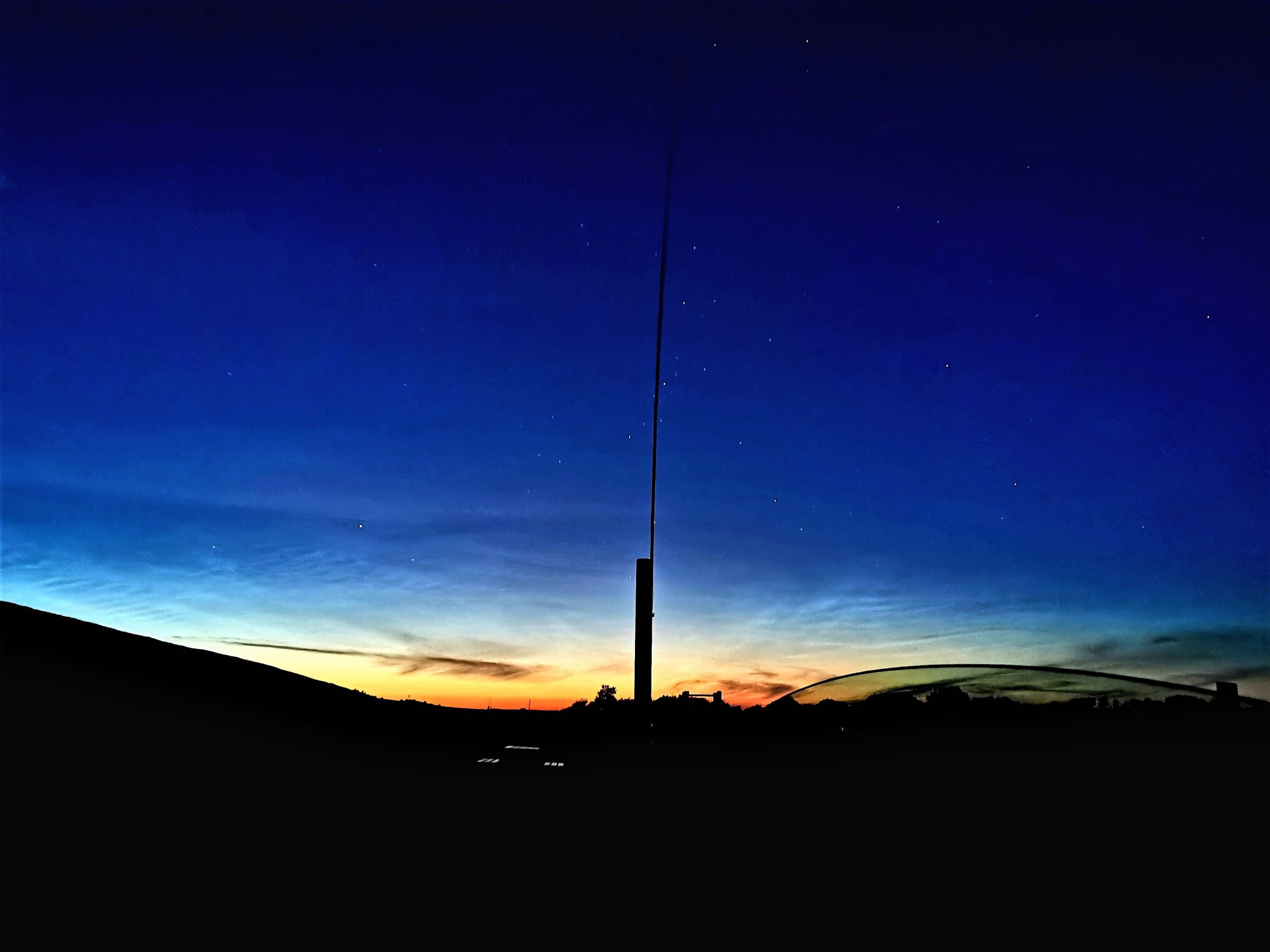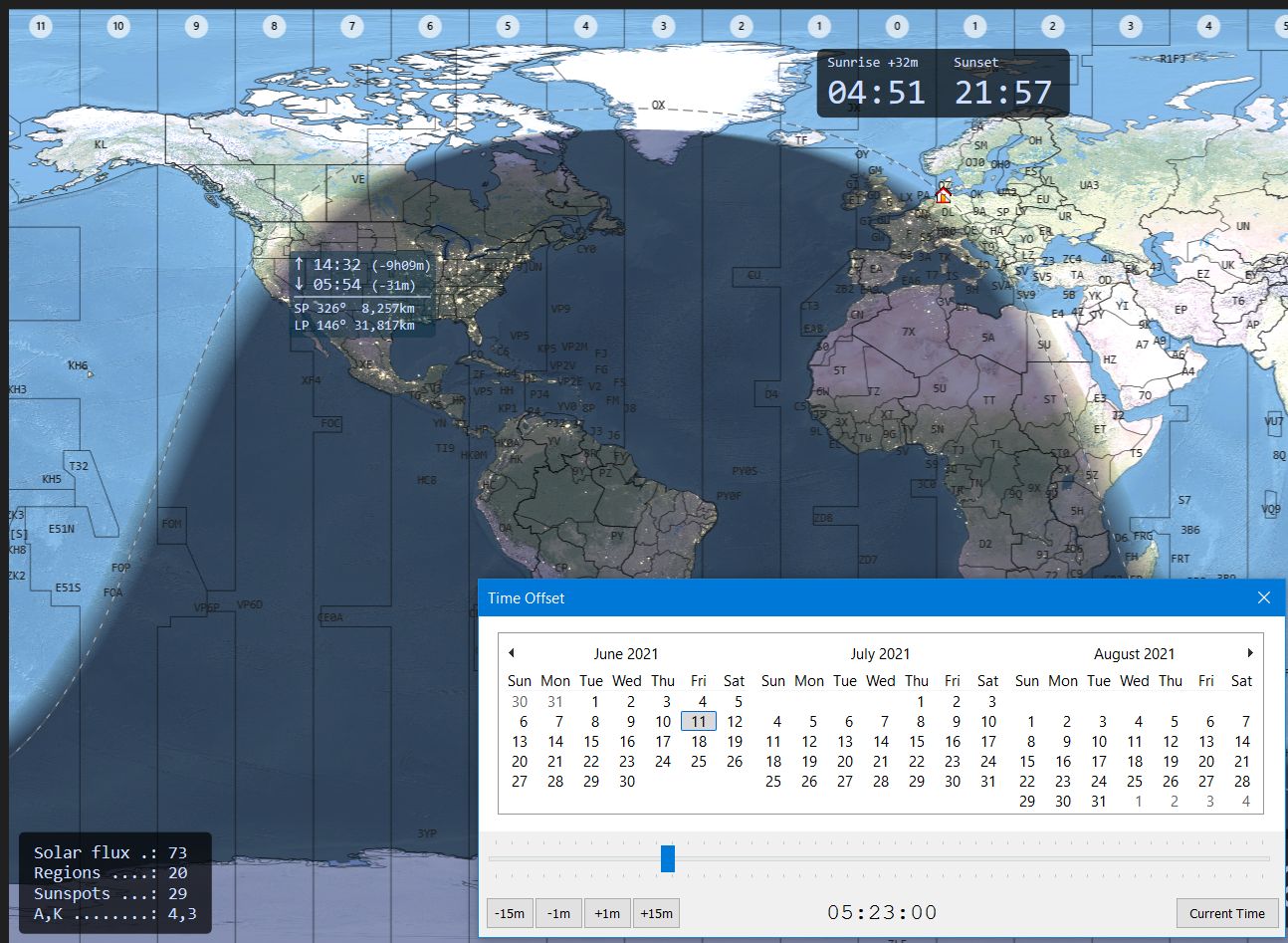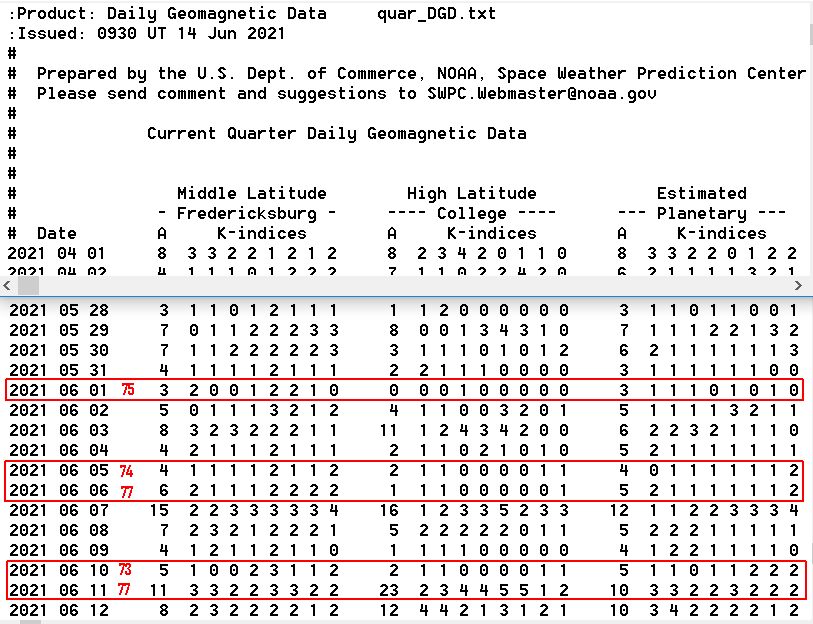Many thanks to SWLing Post contributor, 13dka, who shares the following guest post:
The IC-705 in action at the dike
by 13dka
When I got the IC-705 in late October 2020, I didn’t get that much chance to enjoy it at the dike: After a couple of initial tests and 2 nightly “FYBO” MW DX sessions in November, a way too long and wet winter struck the German North Sea coast, with nighttime temperatures recovering to 2-digit Celsius figures only in the past few weeks. I took the opportunity to do more experiments with loops, preamps and a phasing unit to improve the RFI-stricken reception at home, so I could at least listen to European hams on 80 and 40m raving about their new 705s and start to write my own musings about that lovely little radio, recently posted here.
SSB DX
June 1st, 202
Finally, acceptable temperatures at night! But they come with a downside: When I connected the vertical around 8:00pm (local time), it was still almost 2 hours before sunset and a lot of thunderstorms in Europe made even 14 MHz very noisy, my hopes for some nice catches were immediately taking a dive. A short scan of the bands brought up nothing special, the only notable thing being the CB and 10m bands being moderately open. I should’ve known better: As soon as the sun splashed into the ocean, grayline propagation worked its magic!
As the image probably hints, a couple of Japanese “big guns” produced some nice, comfy signals on the monopole, in addition to the South American and Carribbean stations usually booming in here!
Video: A short collection of ham stations heard around midnight
After midnight I noticed a residue signal of WWV on 20 MHz and still a few EU beacons on 10m. Both incredibly weak with QSB making them disappear but that’s where the 705 really shines – it’s not only picking up these grassroots signals just fine, it shows me that they’re there, or that they were there – a waterfall display keeps on proving that a perceived lack of activity on a band is often pure bad luck – you can tune across an entire band without hearing anything because on each frequency with some activity there’s the other (inaudible to you) station speaking right now, QSB is dipping the signal just when you tune past it…
June 5/6, 2021
That evening the Japanese stations were missing on 20m, I thought I picked one up on 17m, and like so often, the one odd Australian station came in on 20m. After midnight I noticed the 10m beacons again, there were even a few more of them. This time I brought my Belka DSP to the dike so I could compare it with the IC-705, after all the Belka proved to be my most sensitive portable before! The devastating result is likely owed to the fact that the Belka is pretty picky about passive antennas not being matched very well to its input (which is much optimized for the whip) but it picked up diddly squat. If it isn’t a testimony for the sensitivity of the IC-705, it might be one for its aptitude to cope with all sorts of antennas.
Then I tuned into the 10m SSB range and I was veeeery surprised to hear VO1FOG from St. Johns, Canada! This is the first time I heard a transatlantic signal on 10m in a solar minimum ever, but it was with condx only elevated enough for some daytime DX within the EU…and literally in the middle of the night! The signal was very unstable though, he later switched to the 12m band which worked better. Back to what I said about the waterfall display above: Without it, I could’ve missed this station with a pretty high probability simply because I didn’t expect any activity up there, so I wouldn’t have tuned across that band for very long, and without seeing the signal while the VFO is already somewhere else…
I also heard another new country (Ecuador) in SSB, the usual collection of Carribbean islands and some participants of the “Museum Ships Weekend Event” including NI6IW, which is the vanity call of the history-charged USS Midway in San Diego. The “Japanese” station JW4GUA turned out to be on Svalbard island, with the main town Longyearbyen being the northernmost town in the world, only 650 miles from the north pole, and I don’t hear stations from there very often!
Video: June 5th
June 10/11
The past days saw the SFI passing 80 and 11/10m becoming quite busy. By the time I parked the car at the dike, SFI had dropped to 73. That evening the grayline confined itself to colorizing the horizon. 10m and 11m were still full of signals, I could still hear 2 British chaps chatting on 27 MHz at 3:00 in the morning, but nothing really “extraordinary” was coming in – the one odd VK, more Carribbean islands, one Argentinian but not much from other parts of South America, it never gets boring how this all defies predictability. But as always I heard most of the North American continent, not booming in much that night but I followed 2 POTA activations for a while, which are usually at most 100W stations working a lot of other “barefoot” stations and I heard almost all of them. In the morning grayline window for the west coast I finally got one solid signal from Oregon. All my radio life, the US west coast has been a tough target for some reason.
The signal had that typical “over the pole” sound, a relatively quick phasing imprinted into the signal by the charged particles converging over the pole, causing northern lights in the region and that exiting feeling when observing really big, planetary scale physics in realtime, over here at my listening post. The magic of shortwave. 🙂
Broadcast bands
After the post touting the IC-705 as a SWL/BCL receiver, demonstrating it on the broadcast bands seems mandatory to me. However, capturing cool BC DX is a very different business than waiting on the ham bands for interesting stations coming and going and collecting spectacular (-ish) results in a single night this way. Broadcast schedules have to be studied, current “hardcore” DX targets identified… and I have to admit that I’m out of that loop currently. Just turning the knob and recording whatever is populating the bands, and doing that between 21-22:00 UTC, when all programs are directed towards anywhere except Europe turned out to yield pretty boring results. Here it goes anyway:
Video: Browsing the most important BC bands
CONDX and antenna:
The antenna I was using in these videos was a simple wire running up a 10m/33′ fiberglass pole, forming a very archetypical “monopole” or “Marconi” antenna, just a vertical wire, no counterpoise, no matching network, no un-un, transformer or flux capacitor. I planned on using this to make some experiments about the practical benefits (for reception) of all the components it’s now lacking, but it already demonstrates that the beauty of receive-only antennas is that they often don’t require crazy efforts: On the conductive soil at the dike it works pretty well (good signals all over the bands and sufficiently low takeoff angle) as it is.
The evening and the 2 full nights at the dike once again had condx that nobody would phone home about:
It’s not that these numbers always fully explain actual and current condx but decreasing SFI and rising A/K-indices mean low expectations. Despite the condx still characterized by the solar minimum that way, the location is always delivering proper DX for my radios. Unless stormy or severely unsettled geomagnetic conditions give DX a day off, there’s almost always something to take home, be it a new country, a rare island, unexpectedly loud signals from the other end of the planet at unusual times and/or on unusual bands or other ionospheric mysteries.
Speaking of location: These videos demonstrate the properties of that listening post as much as the capability of the IC-705 to harvest them, and they don’t put that into relation to other radios, so you have to rely on my word on this: Compared to what I brought to that place so far it’s jaw-droppingly good, but a big contributor to that is that only few of my other radios can really cope with the antennas I like to use out there in first place. A radio like the IC-705 is sure making the most out of location and antenna, but it’s not the key component because a low-noise location is everything, it always was and it is today more than ever. Without it, radios and antennas can’t really play their jokers.





Thank you! Yes, spectrum/waterfall is for the hunters, not for the prey, but also when you’re a ham? Mmmmh ham! (Had no breakfast yet) 🙂
I mean, when you’re the hunter looking for random exotic hams to call, the waterfall saves you a lot of time you’d otherwise waste by blindly tuning through dead frequencies over and over again, you can spot all pile-ups, identify split operation and observe a whole range of frequencies to find a truly free one to call CQ yourself, or identify a suspiciously empty swath and assume there’s a radar active on the other side that’s currently in your dead zone…all at the same time! 🙂
Another brilliant piece, 13dka!
So you make an excellent point about how convenient it is having a waterfall and spectrum display for listening sessions. It literally expands your ability to find elusive signals by orders of magnitude. As a ham radio operator, I rarely need it in the field, but as an SWL? It’s amazingly useful!
And your point about a low-noise environment is an important one. When you all but eliminate that “all things held constant” noise from home, your receiver really shines and is able to snags those weak signals.
Thanks again for taking us along on your all nighter Dikeside DXing sessions!
Cheers,
Thomas